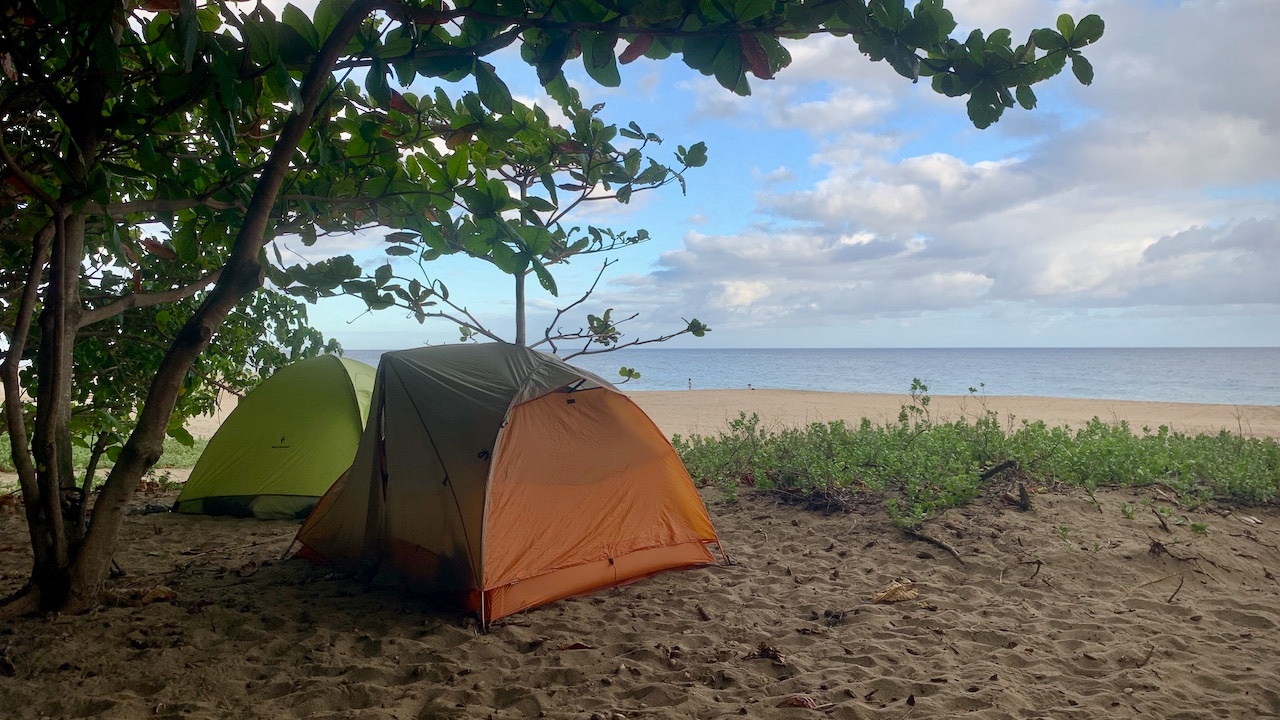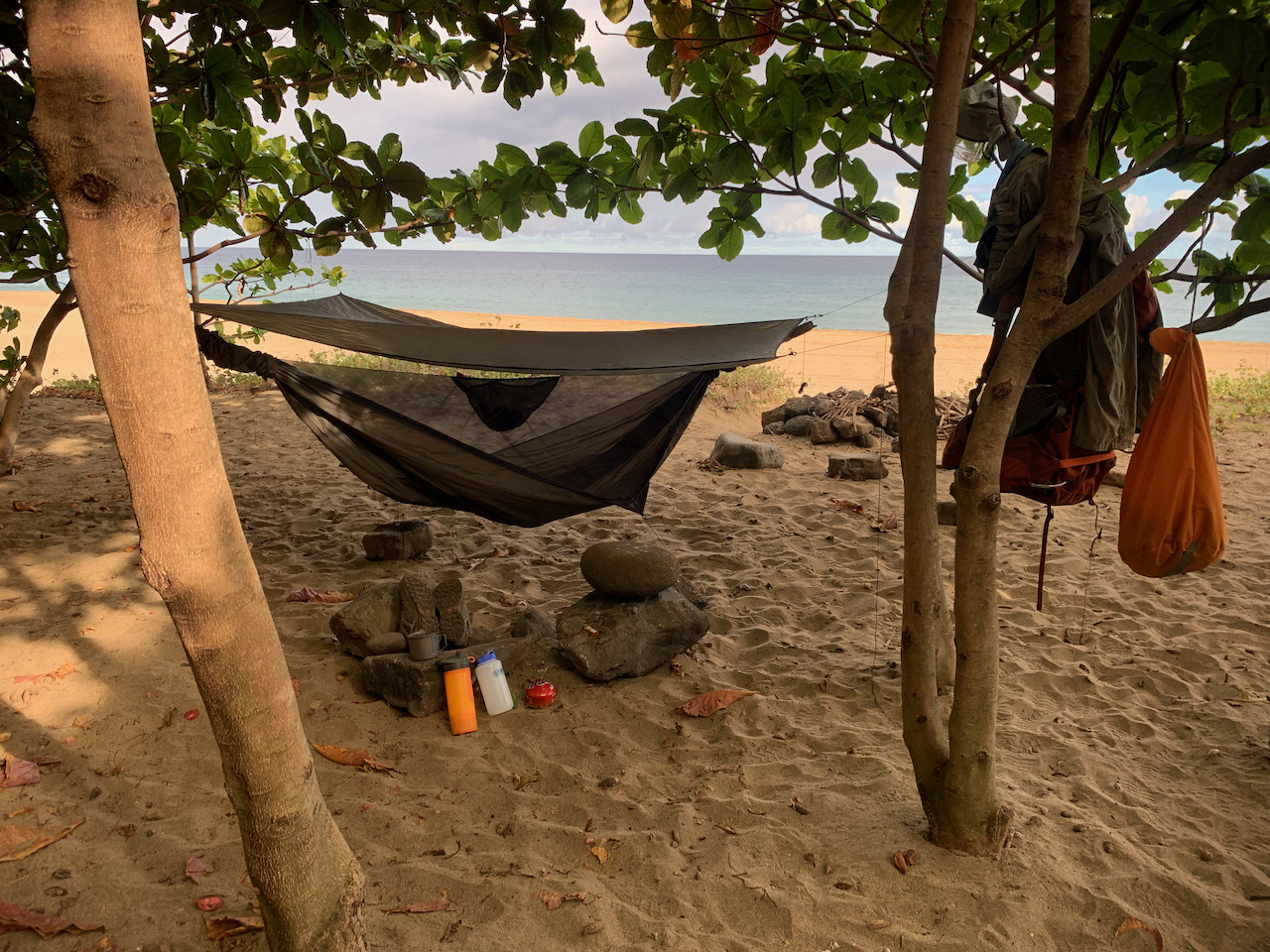
Fortunately, Kalalau Beach, as well as Hanakoa Camp, offer both flat surfaces as well as plenty of trees, so the adventurous hiker can choose between the more traditional tent and the hammock. Both options have unique advantages and disadvantages, and either has haters and fans. So what’s the best way to go for this hike?
Let’s look at the pros and cons for each:
Tent
The good, old tent is the go-to habitat for many. Both Kalalau Beach and Hanakoa camp have flat surfaces that work well for tents. Here are the pros and cons:
Pros
- It’s a stable shelter if properly secured (it tends to be windy in Kalalau).
- You have some storage options for gear overnight and when going to explore the valley.
- Unless you go super small, it’s a great option for groups or couples.
- Multiple people can split up carrying the various parts, which reduces individual pack weight.
- It’s a little warmer than a hammock and you have some insulation via the ground.
- You’re not limited by trees.
Cons
- A tent has a bunch of parts and assembly can take some time unless you’re doing it a lot.
- With a tent, you’ll need a sleeping pad which adds additional weight. Likely, you’ll want a pillow as well.
- The weight, especially when adding in these other items, is usually more than a hammock.
- Volume: This stuff takes up a good amount of room in your pack.
- You’ll be on the ground with creepy crawlies and if it rains. Not a big problem in Kalalau; Hanakoa a little more so.
- Tents tend to collect more dirt and sand.
Hammock
With many trees around, a hammock is a viable option, especially for Kalalau Beach. Hanakoa Camp also has some spots to hang a hammock, but more for tents. Also, when talking about hammocks, I’m not referring to the recreational hammocks you might be more familiar with but to ultralight ones that come with mosquito net and rain fly (I personally like the Hennessy Ultralite).

So here goes:
Pros
- A hammock has fewer parts than a tent and assembly tends to be quicker.
- It’s typically lighter than a tent. You won’t need a sleeping pad and many can also get away without a pillow.
- Less volume in your pack.
- You’ll be off the ground and away from bugs and moisture.
- Hammocks collect less sand and dirt.
- You don’t need flat surfaces, but obviously trees.
- Better ventilation when it’s hot.
- Many say they sleep better in a hammock than in a tent, even with a good pad. Less back soreness.
- Hammocks are great for solo hikers.
Cons
- If it’s windy or generally cooler, you might experience a chilly bottom unless you add some additional insulation. (I have successfully used an emergency/space blanket.)
- Hammocks move or swing when it’s windy (although some might find this soothing).
- Unless you spring for a jumbo version, a hammock is usually a one-man show, which is not ideal for couples.
- You won’t be able to store much of any gear at night.
- Some folks don’t like the slightly bent sleeping position in a hammock, especially side sleepers.
So what gives? Really, it comes down to a personal choice and preference.
I might propose the following: If you want to go as light as possible, especially when you’re a solo hiker, go with the hammock. If you’re in a group or a couple or if you go during the colder months, you might prefer a tent.
Stay connected with news and updates!
Join our mailing list to receive the latest news and updates from our team.
Don't worry, your information will not be shared.
We hate SPAM. We will never sell your information, for any reason.

